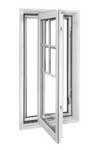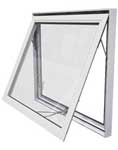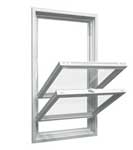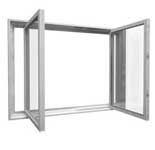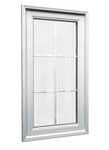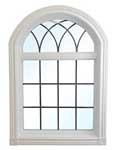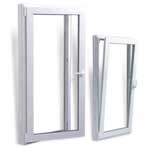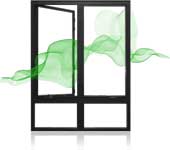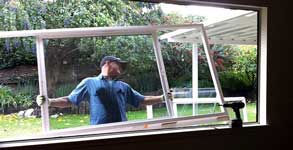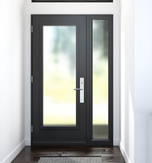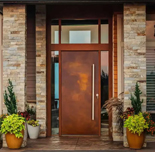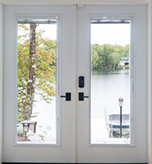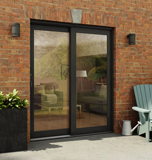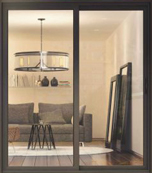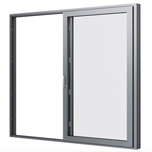I. Introduction
Windows and doors are crucial to your home’s functionality. They not only provide natural light and ventilation, but they are also a central element making up the architectural structure of the building. Providing safety, accessibility, and ways to connect with the great outdoors are a few reasons why windows and doors meet our daily basic needs.
Modern windows and doors can save energy costs while increasing household members’ safety and comfort. However, they sometimes need to be replaced to last many years, as windows and doors can naturally wear out with age. Generally, it’s a good idea to replace windows and doors older than 20 years, beyond repair, or no longer offer the energy efficiency, security, and comfort needed for a property.
Below are the key signs that indicate it’s time for an upgrade.
II. Windows
Old windows can impact a building’s comfort, energy effectiveness, and safety. There are several problems that old windows can create:
Drafts
As windows age, the frames and seals around them may deteriorate and develop cracks, gaps, or holes, leading to draughts. These damages enable air to leak into and out of a building, creating an airflow that may be uncomfortable and cause energy inefficiency.
Higher Energy Bills
Older windows may not be as energy-efficient as modern ones, enabling heat and cool air to escape in the winter and summer. This energy inefficiency can result in higher energy bills maintaining a comfortable indoor temperature, as your home requires additional air conditioning and heat.
Condensation
In older windows, condensation between the panes is a typical issue that can develop when the window’s seals break, enabling moisture to enter the gap between the panes of glass. This moisture may result in various problems, including foggy windows that impair visibility, moisture damage to the window frames, and the growth of mould and mildew that poses health risks to household members.
Security
Older windows may have different security features than more modern windows. For instance, older windows may have less durable glass and weaker locks or frames more susceptible to damage or tampering. Additionally, as windows age, they may become loose or warped, making them easier to pry open or remove from the frame.
A. Age
There are several signs of aging windows; symptoms of aging windows include the following:
- Difficulty opening and closing the windows
- Visible blemishes like chips, cracks, or warping
- Draughts or air leaks around the windows
- Fogging or condensation between the panes
- Fading or discolouration on the frames or glass
- Excessive outside noise transmission
B. Drafts and Leaks
Drafts and leaks can be a common issue with older windows, as the materials used can become worn or damaged over time. These gaps or cracks can allow air to flow into and out of a building, creating discomfort and increasing energy bills.
To check for drafts and leaks in your windows, you can run your palm along the edges of the window frames to feel for any cold spots or air movement. Another way to check for a draught is to hold a lit candle or lighter close to the window’s borders and keep an eye out for any flame movement or flickering. A smoke pen or similar tool can also find airflow near the window.
C. Damage
Various factors, such as weather, accidents, and wear and tear, can cause damage to older windows. The following types of damage can happen to old windows:
- Shattered or chipped glass
- Crooked or warped frames
- Rotted or decaying wood
- Missing or loose hardware
To spot window damage, you can do the following:
- Look for any obvious evidence of damage, such as cracks, chips, or warping, on the frames and glass
- When opening or closing the window, look for any movement or looseness
- In wooden frames, look for indications of rot or water damage
- Verify the functionality of all hardware, including locks and hinges
D. Energy Efficiency
The main benefit of new windows that many homeowners want is to increase their home’s energy efficiency. Since heating and cooling your home consumes 40% of the average energy budget, you want that energy to sustain inside. Here are the best benefits of installing energy-efficient windows:
1. Save Money and Energy
You will save money now and long term by installing energy-efficient windows. When cold air escapes in the summer, or when hot air escapes in the winter, you’ll require extra heating and air conditioning costs. Energy-efficient windows are equipped with insulation properties, keeping the air inside. Additionally, your home will be more environmentally friendly because it uses less energy and fuel.
2. Reduce condensation
Reducing condensation is crucial, especially in rooms susceptible to high moisture, like kitchens and bathrooms. When warm humidity comes into contact with cool windows, it can condense, leaving water puddles and streaks behind. Moreover, excess moisture can lead to the growth of harmful mildew, which can be dangerous to your home, health, and belongings.
3. Increase Your Energy Efficiency
Energy-efficient windows can help you use less energy, as the name suggests. These windows have insulating qualities to maintain a suitable indoor climate in winter and summer. You won’t need to rely much on your heating or cooling equipment because the temperature inside will continually change. Less fuel is used when you use less energy, which makes your home more environmentally friendly.
4. Noise reduction
Do you live in a busy neighbourhood? Many homes endure the everyday noise of continual traffic. Most city people are unaware of their ability to absorb sound in this atmosphere. If you prefer peace while working remotely, energy-efficient windows will do just this and reduce the daily noise distraction.
How to Identify Energy-efficient Windows
You can search for the Energy Star label and the U-factor and Solar Heat Gain Coefficient (SHGC) values to determine energy-efficient windows. While the SHGC gauges how much solar heat the window transmits, the U-factor gauges how well the window insulates.
E. Style
You can improve your home’s overall appearance and curb appeal by selecting windows that complement the design of your home. Consider your home’s architectural style and period while choosing windows. For example, a colonial-style home would look best with double-hung windows with separated panes. Still, a contemporary-style home may benefit from larger windows that reach the ceiling.
To make sure the windows match the design of your house, you can do the following:
- Select window designs that complement the architecture of your home.
- Match the windows’ colour to the existing colour scheme in your house.
- Choose wood, vinyl, or fibreglass material that matches the design of your house.
- Select ornamental elements like grilles, hardware, and trim that accentuate the window style and the house’s overall appearance.
III. Doors
Old doors can create problems impacting a building’s comfort, energy effectiveness, and safety. Here are the most common issues with old doors:
Energy inefficiency
Older doors may get cracks and gaps as they age, which lets air into the house and out again. As a result, your heat and cooling systems may need more energy to keep you at a comfortable temperature, which could result in increased energy costs.
Wear and Tear
As a result of constant use and exposure to the elements, doors may get worn and damaged over time. Cracks, dents, and other problems may affect the door’s functionality and appearance.
Drafts and Leaks
Leaks and drafts are other problems that may occur with older doors. The door may develop gaps and cracks as it ages, allowing air to enter and leave the house. These leakages may result in chilly drafts and temperature swings that are uncomfortable.
Outdated Appearance
Older doors may not be in keeping with the home’s current design or aesthetic, giving the house a dated appearance. Because it can lower the home’s value and deter potential purchasers, this can be especially problematic for homeowners trying to sell their properties.
A. Age
A few warning signs of aging doors are:
- Squeaking or sticking when opening or shutting doors
- Latching or locking challenges
- Splits or cracks in the material of the door
- Bending or warping
- Visible signs of wear and tear, like chipped paint or scratches
B. Drafts and Leaks
Leaks and drafts can happen when there are spaces or breaches in the door, the door frame, or both, allowing air to enter or leave the house. As a result, the heating or cooling system may need to operate more intensively to maintain a constant temperature and exacerbate moisture concerns like condensation, which can result in mould growth.
There are many ways you can check for leaks and drafts. One method is to try and pull a piece of paper out of a closed door. There may be gaps around the door if the paper is simple to remove. Another technique is to hold a candle or lighter close to the door and frame while keeping an eye out for any flame movement or flickering that might indicate a draft.
C. Damage
Several things can harm older doors, including the weather, mishaps, and wear and tear. Old doors may sustain the following kinds of damage:
- Physical damage to the door’s surface, such as cracks or dents
- Warped or crooked door framing might make the door stick or fail to close correctly.
- Hardware issues, including broken or lose hinges, locks, and doorknobs
- decayed or rotted wood, particularly in wooden doors
You can use the following methods to detect door damage:
- Look for any noticeable wear and tear or damage on the door’s surface, such as cracks or dents.
- To see if the door sticks or doesn’t close properly, open and close it to check its alignment.
- Check that all the hardware, such as the doorknobs, locks, and hinges, are working correctly, and replace any missing or faulty.
- Look for rot or water damage in wooden doors by looking for soft or spongy places on the surface, discolouration, or mold.
D. Security
Secure doors are essential for keeping intruders and robbers out of your home and away from your loved ones. A secure door will give you peace of mind that your family and household belongings are protected by preventing entrance. Therefore, picking a door with durable construction, strong frames, and reliable locks is critical.
There are several things to take into account while choosing a security door. You can look for the following factors:
- Strong doors of solid wood, steel, or fibreglass are hard to penetrate and can offer better protection than hollow-core wood or vinyl.
- Strong door frame that is difficult to tamper with. For increased security, look for frames constructed of steel or wood that have been strengthened.
- A reliable locking mechanism, such as a deadbolt lock, is hard to pick and tamper with.
E. Style
It’s crucial to consider both utility and aesthetics when choosing new doors. Doors are essential to the exterior design of a home and will heavily impact the curb appeal. Therefore, it’s vital to select doors that go well with the style architecture of your house. For instance, a wooden door with raised panels and glass inserts can be a good choice if your house has a historic design. However, a sleek, minimalist door with clear lines might better suit your more contemporary home.
You can take into consideration the following elements to ensure the doors you select blend nicely with your home’s design:
- Choose doors that match your home’s architecture and décor
- Select a colour that coordinates with or enhances your home’s colour scheme.
- Choose a material that complements your home’s design, such as wood, steel, or fibreglass.
- Select locks and handles for your doors that match the doors’ design to improve your home’s overall appearance.
IV. Window and Door Replacement
Several elements can affect the price of door replacement, including the following:
Type of Door
The price of doors varies but will be influenced by the type of door you select. For example, a standard steel or fibreglass door often costs less than a custom-made wood door.
Size and Configuration
The pricing will vary depending on the door’s size and configuration. Costs may increase for more oversized doors or those with unique features.
Material
The door’s cost can also be influenced by the material used to make it. For instance, solid wood doors are typically more expensive than composite or fibreglass doors.
Installation
The price of installing a new door is a component worth considering to fit into your budget. Replacing an existing door could be less expensive than building one in a different position, necessitating additional carpentry and framework.
A. Costs
Budgeting for window and door replacement requires careful planning and consideration of several factors. Start by determining how many windows and doors need to be replaced and their respective sizes, materials, and features. Next, research the average cost of these items and labour in your area. It’s essential also to factor in any additional costs, such as disposal of old windows and doors, permits, and any necessary repairs or modifications to the surrounding area.
B. Material Options
Doors are constructed from many different types of materials, each of which has specific benefits and drawbacks. The following list of popular door materials includes both advantages and disadvantages.
Wood
Wooden doors complement numerous architectural types because of their traditional and timeless appeal. They may be stained or painted to complement any home design and are quite sturdy. However, wooden doors can be expensive and require frequent care compared to other materials because they are prone to warping and rotting.
Fibreglass
Fibreglass doors are incredibly durable and require less maintenance. They are energy-efficient and resistant to rotting, warping, and cracking. There are numerous hues and designs available for this material as well. However, they may be pricey in comparison to other materials.
Steel
Steel Doors are exceptionally sturdy, long-lasting, and burglar- and weather-resistant. They also require little maintenance and are energy-efficient. However, steel doors may not be appropriate for some architectural designs and can rust or dent over time.
Aluminium
Aluminum doors are strong, lightweight, and resistant to rust. They also require little maintenance and are energy-efficient. They can be vulnerable to dents and scratches and might not offer as much insulation as other materials. This material comes in a range of designs and colours.
C. Installation
When changing doors, hiring a professional window and door installer is essential to ensure the job is done correctly and that the doors are installed effectively to enhance their lifespan. The advantages of a new door can be entirely negated by an improperly installed door, which can lead to gaps, drafts, and security problems. A professional door installer is advised to guarantee client satisfaction the first time.
Ask family, friends, or neighbours who recently had doors changed for referrals to get the best installer. Conduct an online search and read reviews to learn more and confirm the qualifications and experience of possible installers. Getting quotations from several installers to compare costs and ensure you’re receiving a fair bargain is crucial.
V. Frequently Asked Questions
Can I change my own windows and doors?
Although replacing windows and doors on your own is feasible, the process can be challenging and time-consuming. To ensure the installation is done correctly, it is advised that you engage a professional.
How long does it take to replace a window or door?
Several factors may influence the length of time to replace a window or door. It depends on the number of components that need to be replaced, the difficulty of the installation, and the weather conditions. The renovation can take anywhere from one to three days on average.
Is it worthwhile to invest in energy-efficient windows and doors?
Yes, investing in energy-efficient windows and doors can pay off in the long run by lowering energy costs and enhancing home comfort. It is crucial to weigh the initial expense against the possible long-term savings.
Is winter a good time to replace my windows and doors?
Yes, it is possible to replace windows and doors in the winter, but because of the cold, it may take longer and necessitate extra safety measures.
How can I tell whether I need to replace my windows and doors?
Visible wear and tear, leaks or drafts, and rising energy costs indicate that you might need new windows and doors. A qualified inspection can also assist in determining whether replacement is required.
VI. Conclusion
Windows and doors are essential to your home’s operation, aesthetics, and security. Therefore, it’s crucial to maintain and replace them as needed to guarantee that they continue delivering the intended advantages. Although replacing your windows and doors may be a costly investment upfront, it can also increase the value of your house and offer essential long-term benefits like security and energy efficiency.
Working with a skilled installation company and selecting premium materials that complement the style and requirements of your home are recommended for the best results. By prioritizing your window and door replacements, you will increase your home’s overall comfort, safety, and aesthetic appeal.
Eco Choice Windows & Doors is a leading supplier and installer of quality windows and doors and have been in business for over 15 years, installing windows and doors for many satisfied customers across the province.
Call us today at (416) 690-9992 or complete our convenient online form to book your free no-obligation consultation now!

